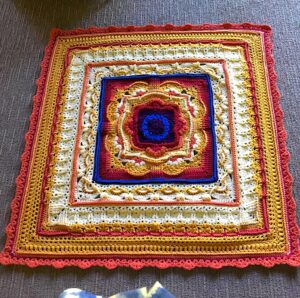This is the fifth part of a five-part blog series with this outline
Part One: Personal Background Information (Release Date: 3-16-22)
Part Two: Information Storage – Bridge Pieces (Release Date: 3-30-22)
Part Three: Information Processing – The Gaps (Release Date: 4-13-22)
Part Four: Information Retrieval – Canoe Transportation (Release Date: 4-27-22)
Part Five: Conclusion (Release Date: 5-11-22)
Just like I have done in Parts 2, 3, and 4 of this blog series, many autistics when given the chance can speak to their own inner workings. Some are able to draw maps or pictures depicting how it looks to them internally when they
-
-
- take in information,
- process information,
- store information and
- retrieve information.
-
Others are able to speak, write, draw or use technology to show aspects of their own system. There are many common themes amongst autistics, but each system is idiosyncratically different from the system of others.
I have worked with autistics for some years now, pulling out this information and working with them developing and using neurologically matched solutions to dilemmas in their lives.
Regardless of the topic or the problem, the success of a solution requires me to discover some aspect of how my clients or students brains handle information. I have found this to be the key that unlocks my discovery of how comprehension of written and spoken words might better work for them. Sharing this information with others is the reason for the writing the book Autistically Thriving (Endow, 2013).
Selection from Autistically Thriving: Reading Comprehension, Conversational Engagement, and Living a Self-Determined Life Based on Autistic Neurology, pg. 112-113.
The first photo is an afghan I crocheted to match the acrylic I painted some years earlier.
`
`
Note: The author is a mental health therapist and is also autistic. She intentionally uses identity-first language (rather than person-first language), and invites the reader, if interested, to do further research on the preference of most autistic adults to refer to themselves using identity-first language.
BOOKS BY JUDY ENDOW
Endow, J. (2021). Executive Function Assessment. McFarland, WI: Judy Endow.
Endow, J. (2019). Autistically Thriving: Reading Comprehension, Conversational Engagement, and Living a Self-Determined Life Based on Autistic Neurology. Lancaster, PA: Judy Endow.
Endow, J. (2012). Learning the Hidden Curriculum: The Odyssey of One Autistic Adult. Shawnee Mission, KS: AAPC Publishing.
Endow, J. (2006). Making Lemonade: Hints for Autism’s Helpers. Cambridge, WI: CBR Press.
Endow, J. (2013). Painted Words: Aspects of Autism Translated. Cambridge, WI: CBR Press.
Endow, J. (2009b). Paper Words: Discovering and Living With My Autism. Shawnee Mission, KS: AAPC Publishing.
Endow, J. (2009a). Outsmarting Explosive Behavior: A Visual System of Support and Intervention for Individuals With Autism Spectrum Disorders. Shawnee Mission, KS: AAPC Publishing.
Endow, J. (2010). Practical Solutions for Stabilizing Students With Classic Autism to Be Ready to Learn: Getting to Go. Shawnee Mission, KS: AAPC Publishing.
Myles, B. S., Endow, J., & Mayfield, M. (2013). The Hidden Curriculum of Getting and Keeping a Job: Navigating the Social Landscape of Employment. Shawnee Mission, KS: AAPC Publishing.

